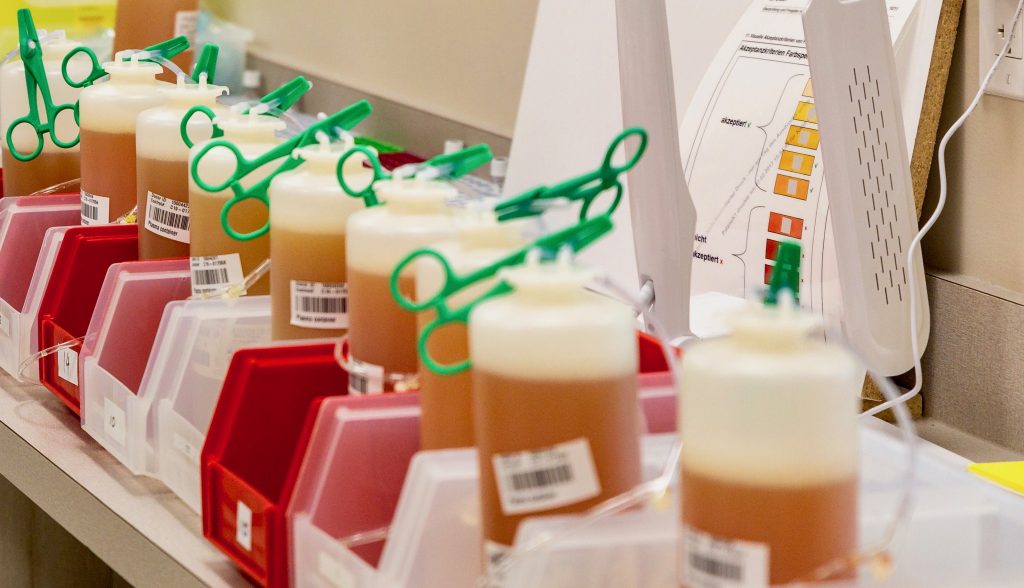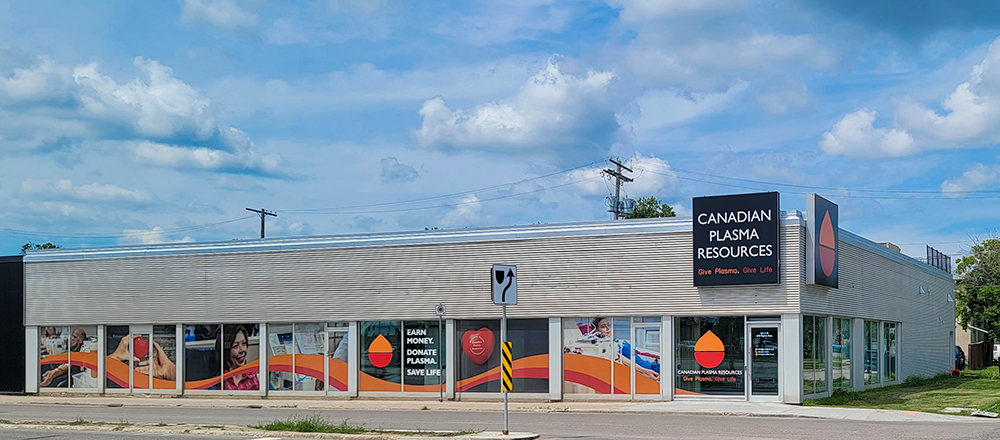10 Surprising Facts About Blood Plasma
mai 26, 2021

Plasma is a protein-rich component of blood that is used to treat numerous rare and chronic conditions. This yellowish liquid is capable of amazing things, and scientists are continuing to discover new uses for it every day.
In this blog, we’ll be delving into 10 surprising facts about blood plasma that you may not know. Let’s get into it!
1. Plasma is the main component of blood.
Even though plasma doesn’t look very similar to blood, it actually makes up more than half (roughly 55%) of its overall content. The main role of plasma is to carry nutrients, hormones, and proteins to the parts of the body that need it. Blood plasma also contains important antibodies, clotting factors, and proteins that can be made into life-saving therapies for people with rare diseases.
2. Plasma donation is not the same thing as whole blood donation.
Most people are pretty familiar with whole blood donation, but plasma donation is not as well known. Whole blood can either be transfused in its original form or separated into its specific components – red cells, white cells, platelets, and plasma. Plasma, on the other hand, is extracted from your blood using a special machine and is specifically used to make important therapies that immunocompromised people rely on. The blood donation and plasma donation processes are fairly similar; however, donating plasma does take longer.
3. There are two types of plasma donations.
There are two types of plasma donations that exist – recovered plasma donations and source plasma donations. Recovered plasma comes from whole blood donations that are separated into individual components. Source plasma donations are collected through a process called plasmapheresis, where donors are intravenously connected to an apheresis machine that separates out plasma and returns other blood components to the donor’s body.
4. You can give plasma twice within a seven-day period.
As a plasma donor, you can make two donations in a seven-day period so long as there is at least one rest day between the two donation days. If you donate plasma twice a week at Canadian Plasma Resources, you can significantly increase the amount of compensation you receive.
5. There is no substitute for the therapeutic proteins that come from plasma.
The proteins, antibodies, and some clotting factors found in blood plasma are one-of-a-kind, and there is no replacement for them. Life-saving medicines, like intravenous immunoglobulin (IVIg) therapy, can only be made from donated plasma.
6. Source plasma is used to treat dozens of different diseases.
There are over 80 different autoimmune disorders, immunodeficiencies, and rare blood disorders that donated source plasma is used to treat. Some of the diseases that can be treated using plasma-derived therapies include alpha-1 antitrypsin deficiency, primary immune deficiency, and von Willebrand disease.
7. Up to 1,200 donations are needed to treat one patient for a year.
To create enough life-saving therapies to help patients in need, millions of litres of plasma must be donated every year. It takes 1,200 plasma donations to treat one patient with hemophilia, 900 donations to treat one patient with alpha-1 antitrypsin deficiency, and 130 plasma donations to treat one patient with a primary immune deficiency for a year.
8. Paid plasma donations are only permitted in some places in Canada.
Despite the numerous benefits of paid plasma donations and overwhelming evidence that they are just as safe as unpaid donations, not all provinces allow donors to be compensated. Provinces that do allow for paid plasma donations include:
- Saskatchewan
- New Brunswick
- Alberta
- Manitoba
- Newfoundland and Labrador
- Nova Scotia
- Prince Edward Island
9. Not enough plasma is collected in Canada to meet the demand for plasma products.
Compensating donors has been proven to be the only way to ensure a secure supply of plasma. Because not all provinces permit paid plasma donations, Canada has to rely on plasma from paid American donors to meet the growing demand for blood plasma.
10. The United States is responsible for 70% of the global supply of blood plasma.
Paid plasma donations are permitted across the United States and, as a result, they provide 70% of the global supply of plasma. 90% of the total supply of plasma can be accounted for when the U.S. is grouped with other countries that allow for plasma donors to be compensated, including Austria, Czechia, Germany, and Hungary.
There you have it – 10 surprising facts about blood plasma that you may not have been aware of. Here’s one more fact that you should know – the need for plasma never goes away for patients with rare diseases. That’s why your donations are so important. If you’d like to help ensure a secure supply of plasma for patients who need it and get paid for your contribution, book your next appointment today!









